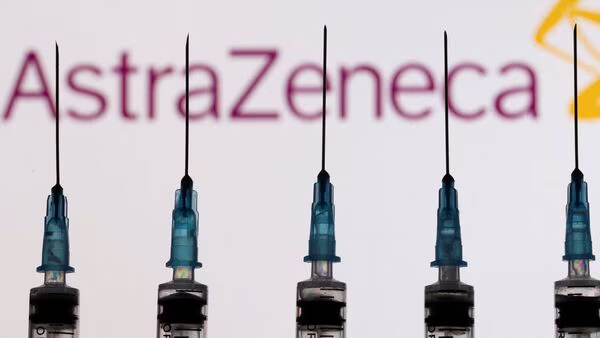Newsmatro

Recent developments have seen AstraZeneca, the British pharmaceutical giant, publicly acknowledge in court documents the potential side effect of its COVID-19 vaccine causing Thrombosis with Thrombocytopenia Syndrome (TTS), a rare condition associated with blood clotting.
This admission comes as a significant revelation, particularly considering the widespread global distribution of the vaccine under various brand names such as Covishield and Vaxzevria.
Thrombosis with Thrombocytopenia Syndrome (TTS) poses serious health risks and is considered a life-threatening adverse event.
While this disclosure marked the first time AstraZeneca openly admitted such potential side effects in legal documentation, the adverse effects were previously disclosed in the vaccine’s clinical trial reports.
Symptoms of TTS, including severe or persistent headaches, blurred vision, shortness of breath, chest pain, leg swelling, or persistent abdominal pain, typically manifest within 4 to 42 days post-vaccination.
Days after this admission, AstraZeneca made headlines by announcing a global withdrawal of its COVID-19 vaccine. The company attributed this decision to the availability of multiple updated vaccines in response to the evolving nature of the pandemic.
According to AstraZeneca, the presence of alternative vaccine options in the market has led to a surplus of available vaccines, subsequently impacting the sales of its COVID-19 vaccine.
Interestingly, despite the withdrawal announcement, AstraZeneca reported better-than-expected quarterly revenue and profit, surpassing market expectations.
The company’s core earnings per share rose to $2.06, with a 19% year-on-year increase in revenue to $12.68 billion, according to Reuters.
This positive financial performance contrasts with the decision to withdraw the vaccine, underscoring the complex dynamics at play.
The AstraZeneca-Oxford vaccine, also known as AZD1222 or Covishield, operates on a viral vector platform.
It utilizes a genetically modified adenovirus, a weakened version of a common cold virus, to deliver genetic material from the spike protein of the SARS-CoV-2 virus.
Upon vaccination, this modified adenovirus instructs cells to produce the spike protein, triggering an immune response that primes the body to combat the actual virus upon exposure.

Moreover, the adenovirus vector stimulates a broader immune response, potentially enhancing the vaccine’s effectiveness.
This approach, while demonstrating safety and efficacy in various vaccines before, offers logistical advantages as the AstraZeneca-Oxford vaccine can be stored and transported at standard refrigeration temperatures, facilitating global distribution.
In India, where AstraZeneca manufactures the vaccine in collaboration with the Serum Institute of India (SII) under the brand name Covishield, the repercussions of AstraZeneca’s global withdrawal are yet to fully unfold.
While the voluntary withdrawal from the European Union for Vaxzevria has been initiated, similar actions may follow in other countries, including India.
However, the Indian government’s stance on vaccine procurement suggests minimal immediate impact.
Sources within the Health Ministry have indicated that no COVID-19 vaccine purchases have been made in the past two years, with no plans for additional procurements in the foreseeable future.
Additionally, the Serum Institute of India (SII) has substantial vaccine stocks, with 250 million doses of Covishield at its Pune facility, ensuring continued availability despite any potential changes in manufacturing plans.
In conclusion, while AstraZeneca’s global withdrawal and the admission of potential side effects have sparked discussions and raised questions about vaccine safety, the full implications of these developments, particularly in India, remain contingent on future decisions and actions within the pharmaceutical industry and regulatory landscape.